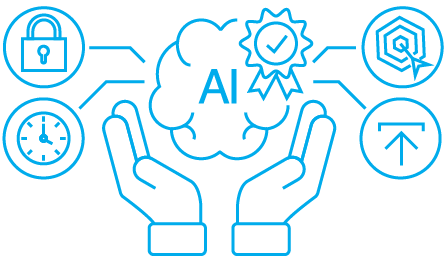- I. Data Transparency and sources of our data
- II. Data quality
GDPR was introduced more than a year ago – what changes it caused in the online advertising industry? For sure, digital marketers have made improvements to their data infrastructure. Let’s take a look at how OnAudience.com comply with the European privacy rules.
I. Data Transparency and sources of our data
A) Data sources
When we talk about data transparency, one of the crucial elements are data sources. We pay close attention to types of the data we gather from our partners and we verify if they obey data privacy regulations to be sure that data we provide is GDPR-safe.
As one of the world’s largest data provider, we gather data from many digital sources and partners from various areas. How do we collect data?
1. After we sign an agreement with our partner and make sure that the process is GDPR-safe, the partner initiate the cookie matching process. In result, transacted data enrich or verify profiles from our database.
2. We can also receive raw data from our partners. We use raw data either to create segments (with the use of our Machine Learning algorithms that assign data to the right segment) or to enrich ready-made segments.
Below we list our key data sources:
- online campaigns
- media brokers
- publishers
- research companies
- technology providers
- affiliate networks
- analytical solutions
- social media plugins
B) Data Transparency and IAB standards
Data transparency builds trust to data providers, so companies are trying to make key aspects of their data clear. What are the key aspects of data that should be available for data buyers?
Many digital market initiatives aim to present standards for companies in the privacy or transparency area. IAB Tech Lab worked on data transparency standards – a document which shows the most important aspects of provided data. OnAudience comply with the standards and mentioned data attributes are:
1. Data sources – it refers to user activity – if the data was collected online or offline? From what kind of device the data has been gathered? That information can show marketers how if the source of data is adequate for their campaigns. For example, if they want to reach mobile audiences, they can look for data collected from smartphones and tablets.
We’ve listed sources of our data above and – as we mentioned – we pay close attention to choose partners that comply with privacy issues.
2. Age of data – for marketers it is one of the crucial information about data quality. If the cookie is old, it can mean that a user’s interests or intentions have changed. A simple example – if a user was interested in baby clothes a few months ago it doesn’t mean that he or she is still looking to buy ones. So targeting those cookies could be a waste of budget.
In OnAudience we’ve implemented internal procedures to keep our data fresh.
We regularly update our data:
- 30 days for Interests
- 7 days for Purchase Intentions
So that advertisers can be sure they’re targeting a real person with the right interests.
3. Modeled data – thanks to this attribute, data buyers know if the data was subjected to the modeling process. For example, it is clear if the segment was used in retargeting or if it includes look-alike profiles. In other words, this attribute can show you how precise is the data that you’re interested in.
4. Data segmentation – inform marketers if the segment was built by a human or machine. ‘Descriptive’ segments were created on the basis of human declarations – age, income, etc. ‘Predictive’ segments are built with a use of algorithms – when machines observe what users do online, which sites they visit – they can assign them to the chosen interests segments.
For example, if John often visits websites with car reviews, the algorithm will connect his profile to Interests -> Automotive segment.
OnAudience taxonomy includes more than 1,200 segments divided into categories, such as Interests, Demography, Purchase Intentions or Brands.
5. Consistent data taxonomy – it is extremely important when you run international campaigns or use data from various providers. Consistent data taxonomy lets you compare segments from various sources, for example, size or price.
What’s more, you can look for users segmented in the same way on various markets – in Europe, the USA or other countries – and you’re sure that their online behaviour is very similar.
OnAudience taxonomy complies with international IAB standards and includes over 1,200 segments from which you can choose your target group.
II. Data quality
Data quality is a hot topic in the digital advertising industry. AdExchanger wrote that it should be at the top of everyone’s list. But how can marketers check the quality of data? One of the most trusted ways is to verify data by international standards prepared by Nielsen.
The test is called Nielsen Digital Ad Ratings. How does it work? Using the global database of ad campaigns analysed from the perspective of reaching out to a target audience, Nielsen sets mid-market values for specific segments in various regions of the world. Data providers can run this test and compare their data with the world’s mid-market values.

OnAudience data is constantly verified by Nielsen DAR test, and our data significantly exceed the mid-market values.
Our demographic data used in programmatic campaigns – Age and Gender segments – was from 19 to 48 percentage points higher than market benchmark levels.
To be sure that our products and services comply with the GDPR, we asked an international law company to conduct a legal analysis of our offer. The company verified that our data is GDPR-safe and can be safely purchased and used by our clients.



